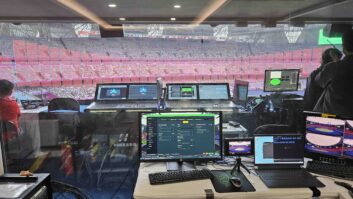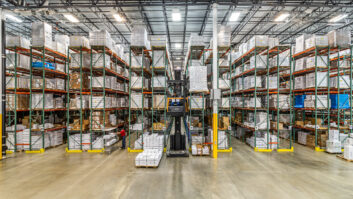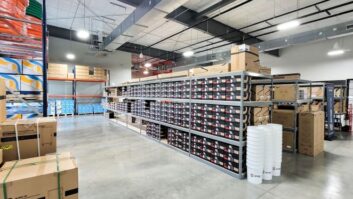
As the old adage goes, size matters – and nowhere is that as true as in the classroom, where teaching equipment is vital for every pupil’s education. Recent research has shown that ‘cheap seats’ exist in UK schools: children sitting far away from the screen, or at the peripheries of a classroom, are unable to benefit from the same learning experience as everyone else. This is a pressing issue – and one that needs to be taken seriously by schools and IT decision-makers.
But size isn’t the only feature that must be taken into consideration when tooling up a classroom. Technology must ensure an inclusive learning experience for each child, and must be as time-efficient as possible. With time in education being so precious, it is important that not a second is wasted. Unfortunately, old and outdated technology is doing exactly that.
There’s often a quiet giggle in a classroom when teachers can’t get an educational DVD working, or when an old overhead projector breaks. But this is actually symptomatic of a worrying problem. Massive swathes of time – time that could be spent on teaching – are being wasted in the classroom on a daily basis.
A waste of precious time
When it comes to poorly performing or outdated classroom tech, teachers find that a lot of time is lost in the classroom each week when trying to overcome the challenges presented by old or outdated equipment. Research shows that a third (31%) of teachers lose 1-2 hours a week grappling with old display equipment; over a quarter (29%) lose 3-4 hours, and one-in-ten loses 5-6 hours a week, which translates to over an hour a day.
Old tech is a far-reaching issue that causes problems in schools across the UK. Budget cuts have hampered the education sector in recent years, with educational institutions continually put under pressure to do more with less money. This has resulted in old technology being used in classrooms across the United Kingdom, despite students using smartphones and connected devices on a daily basis.
This issue isn’t just hampering pupils – but educators too. Equipment frustrations have an impact on teachers, and their enjoyment of the job, and can hamper their creativity. A recent survey conducted of 500 UK teachers – split across primary and second schools – found that two-thirds (66%) are forced to plan their teaching carefully around the restrictive equipment and display screen technology in their classrooms.
The key to increased pupil engagement
Well-performing tech isn’t just the key to saving time in the classroom. A survey has showed that more than three-quarters (76%) of teachers think that having better display technology in their classrooms would more effectively engage their pupils, while more than half (56%) find also that pupils react better to teaching which makes use of a projector.
Technology has a crucial role to play in our schools, particularly when it comes to how teachings are presented, and more specifically, what they’re presented on. When it comes to engaging pupils better, it is generally accepted by experts that creativity is a key way to do this. What’s more, 60% of teachers agreed that they can be more creative in their teaching when using updated and different equipment, such as projectors.
We expect teachers to deliver good exam results, and a lot of the time they need to make mundane topics more interesting for students – which is where tech can play a massive role. This is substantiated further by the fact that over half (52%) of teachers prefer teaching with a projector, as opposed to television screens.
A level educational playing field
Creativity and engagement isn’t the only benefit of better in-school tech. Research has revealed that the display technology used in many schools is restricting the viewing, and thus learning, experience of many pupils, and having a detrimental effect on their education.
40% of teachers have noticed a correlation between pupils being unable to see a screen properly and lower test/exam scores – which stems from the use of flat-panel displays. With studies showing that 58% of students cannot read all content on a 70-inch flat-panel screen, and 79% of teachers still using flat-panel displays, including whiteboards, blackboards and TVs, many visual displays used in UK classrooms are failing to provide a screen size that can be viewed by an entire class.
So, better tech, including interactive projectors, could not only provide the key to greater pupil engagement, but also help ensure that every pupil in a classroom is benefiting from the same learning experience. The right classroom set-up can help both boost pupil performance and engagement, as well as support our teachers.
Simone Martorina is business manager VI, Epson UK







